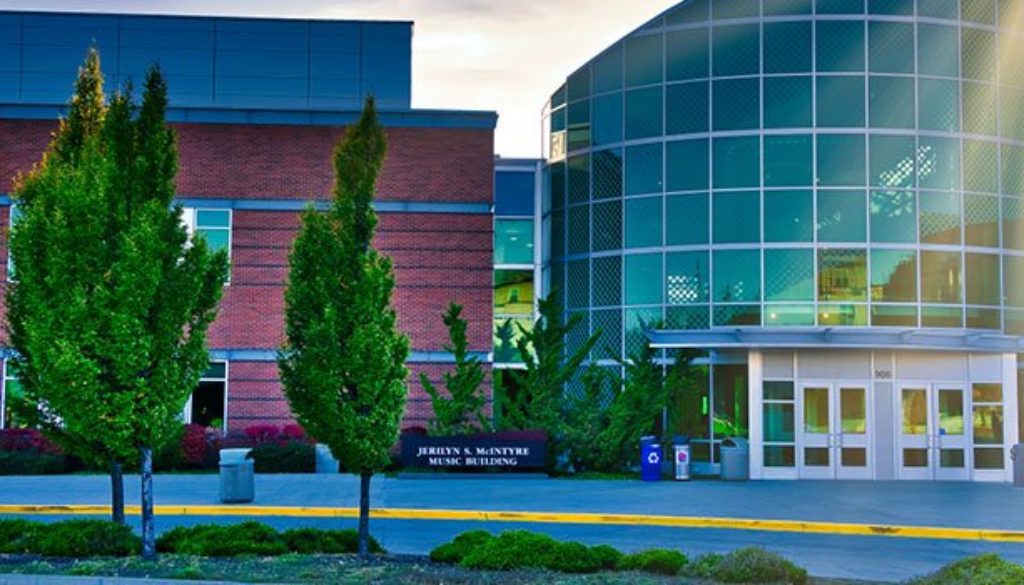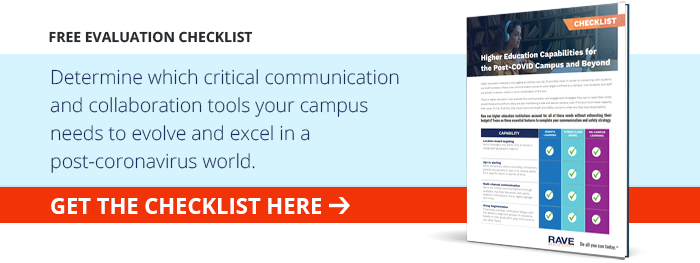Retour sur le campus : Un aperçu de ce à quoi pourrait ressembler le semestre d’automne 2021
Last June, we published a blog anticipating what the fall semester 2020 may look like across American colleges and universities based on data provided by the Chronicle of Higher Education and the American Council of Education.At the time, 82% of the colleges and universities that had plans in place were saying classes would be held in-person, with only 9% saying classes would be held online, and the other 9% planning to operate a hybrid model. However, by October, only 33% of colleges and universities were fully or primarily offering in-person classes – the remainder having reverted to online or hybrid classes.
Although much has changed this year due to the success of the vaccination rollout, anticipating what the fall semester 2021 may look like is still a stab in the dark. However, this year the uncertainty into what the fall semester 2021 may look like is not solely attributable to the potential for further waves of the virus, but rather the way in which colleges and universities are managing the risks.
Do Any Two Colleges or Universities Have the Same COVID-19 Mitigation Strategy?
In April, Cleveland State University was the first public university to stipulate that staff and students would have to be fully vaccinated before returning for in-person lessons in the fall semester. A trickle of other colleges and universities followed suit prior to May 13th, when the CDC announced revised safety guidelines for people who are fully vaccinated against COVID-19.
The CDC’s announcement prompted further colleges and universities to follow suit and now nearly five hundred institutions of Higher Ed have some form of vaccination requirement. However, while many colleges and universities require all staff and students to be vaccinated, some only require staff to be vaccinated, others require only students to be vaccinated; and, in some colleges and universities, only students who live on-campus are required to be vaccinated.
To further complicate the issue, there are many differing mask policies for the fall semester. Some colleges and universities will require everybody visiting the campus to wear a mask at all times irrespective of their vaccination status. Others will allow fully vaccinated staff and students to abandon masks either in all locations or in outdoor locations. Some have policies that require masks indoors, but not outdoors, while others don’t require masks at all – even if you’re not vaccinated.
Many COVID-19 Mitigation Strategies Will be Subject to Change
Vaccinations and masks aren’t the only issues impacting COVID-19 mitigation strategies, and factors such as social distancing, COVID-19 testing, self-quarantining, and isolation will also impact what the fall semester 2021 may look like. However, while some universities have already announced measures that will be implemented from the start of the fall semester, others are relaxing existing measures gradually or making them flexible subject to local infection rates.
Outside influences beyond local infection rates may also have an impact on COVID-19 mitigation strategies. In some jurisdictions, legislators have passed laws prohibiting colleges and universities asking about the vaccination status of staff and students. Consequently, institutions such as Indiana University that were requiring proof of vaccination, are now relying on a self-attestation “honor” system to determine when masks, social distancing, and self-quarantining are required.
Undoubtedly, the inability to enforce COVID-19 mitigation strategies will impact their effectiveness. Furthermore, the emergence of new, more transmissible variants of COVID-19 – which appear to be affecting more younger adults than before – is also a concern because nobody knows how effective existing vaccines are against the variants. Consequently, there is a possibility the fall semester 2021 may look exactly like the fall semester 2020, with many colleges and universities reverting to online or hybrid classes by October.
Communicating Short Notice Policy Changes to Students and Staff
There is little doubt colleges and universities will have to communicate policy changes at some stage of the fall semester. In the best possible scenarios, the policy changes will relate to relaxations of COVID-19 mitigation strategies. However, it is conceivable mask mandates, social distancing requirements, and compulsory testing may have to be reintroduced, that sporting events are cancelled, or that classes are taught remotely instead of in-person.
At times such as these, it is important that policy changes are communicated quickly, and also that they are communicated clearly with an explanation of why changes are being made. It may also be necessary to provide comprehensive instructions relating to replacement policies if these involve compulsory testing (i.e., where and when testing is available) or remote classes – especially if students don’t have access to the technologies or software they need to attend remote lessons.
One further consideration is how students will respond emotionally to any changes. Although colleges and universities may be better prepared to address student mental health issues than they were last year – and students who have been through it before may be better prepared to cope – the fresh intake of students may bring issues with them from last year’s High School experiences that complicates their emotional responses and how to address them.
Rave’s Communication Solution to Better Manage COVID-19 Mitigation Strategies
The Rave Platform is a communication solution that can help colleges and universities better manage COVID-19 mitigation strategies. Consisting of a flexible mass notification system that connects administrators to staff and students via personal safety apps, the platform can be used to effectively communicate short notice policy changes to everybody on or off campus in messages that can communicate more than an SMS text. The benefits of deploying personal safety apps include:
- Messages can be geo-targeted so a person entering a targeted area receives a message relating to that area (i.e., a canteen) as they enter it.
- The apps can be used as repositories for COVID-19 policies and mental health resources that can be updated remotely by system administrators.
- The apps support anonymous tip texting services so health and safety personnel can be alerted to violations of COVID-19 policies that place others at risk.
- Students can take advantage of two-way communications to seek help with negative emotional responses and report concerns about a colleague’s mental health.
To find out more about how the Rave Platform can help your college or university better manage COVID-19 mitigation strategies, do not hesitate to get in touch. Our team of Higher Ed safety experts will be happy to discuss the scenarios your college or university may experience in the fall semester and how you can better prepare for foreseeable and unforeseeable events during the coming academic year.





